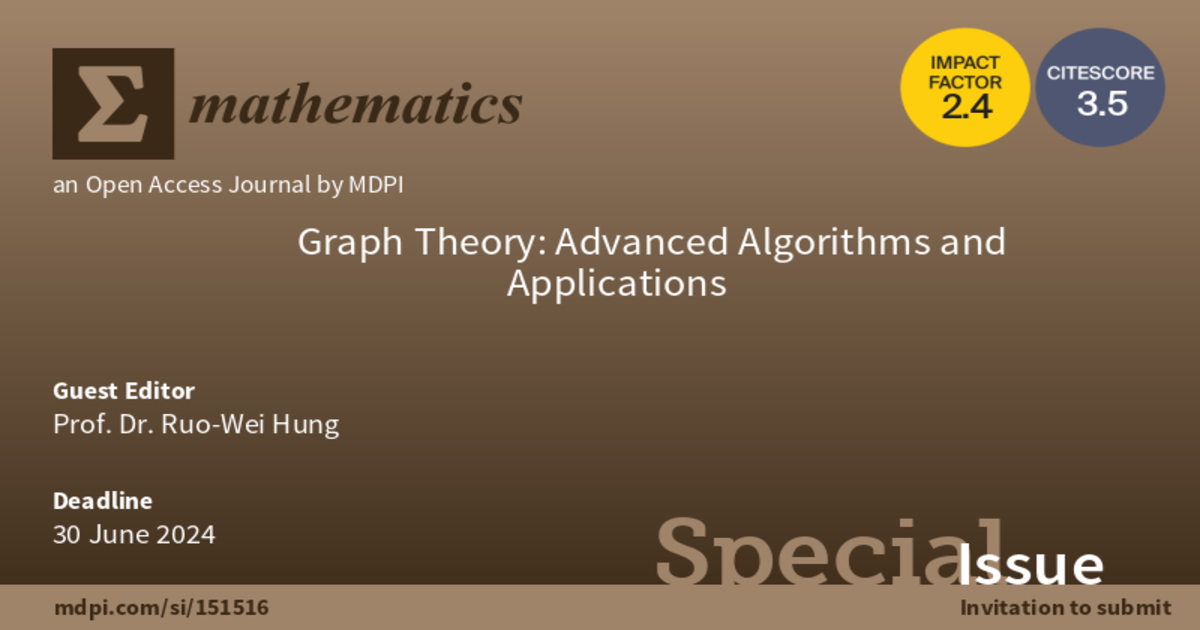Graph Theory: Advanced Algorithms and Applications
A special issue of Mathematics (ISSN 2227-7390). This special issue belongs to the section "Computational and Applied Mathematics".
Deadline for manuscript submissions: 30 June 2024 | Viewed by 7620

Special Issue Editor
Interests: graph algorithms; linux system; applications for smart phones; security on IoT
Special Issues, Collections and Topics in MDPI journals
Special Issue Information
Dear Colleagues,
Graph theory has grown into a significant area of mathematical research, with applications in computer network architecture, electronic circuits, interpersonal graphs, social network analysis, and many other areas that require fast algorithms for various optimization problems. For this Special Issue, we welcome all research papers on the mathematical, computational, and applied aspects of graph theory.
We invite contributions of original research to this Special Issue, “Graph Theory: Advanced Algorithms and Applications”, which aims to report and review recent developments concerning graph theory and discrete mathematics, covering the whole range of this field from theory to applications.
Prof. Dr. Ruo-Wei Hung
Guest Editor
Manuscript Submission Information
Manuscripts should be submitted online at www.mdpi.com by registering and logging in to this website. Once you are registered, click here to go to the submission form. Manuscripts can be submitted until the deadline. All submissions that pass pre-check are peer-reviewed. Accepted papers will be published continuously in the journal (as soon as accepted) and will be listed together on the special issue website. Research articles, review articles as well as short communications are invited. For planned papers, a title and short abstract (about 100 words) can be sent to the Editorial Office for announcement on this website.
Submitted manuscripts should not have been published previously, nor be under consideration for publication elsewhere (except conference proceedings papers). All manuscripts are thoroughly refereed through a single-blind peer-review process. A guide for authors and other relevant information for submission of manuscripts is available on the Instructions for Authors page. Mathematics is an international peer-reviewed open access semimonthly journal published by MDPI.
Please visit the Instructions for Authors page before submitting a manuscript. The Article Processing Charge (APC) for publication in this open access journal is 2600 CHF (Swiss Francs). Submitted papers should be well formatted and use good English. Authors may use MDPI's English editing service prior to publication or during author revisions.
Keywords
- graph algorithms and theory
- discrete applied mathematics
- theoretical computer science
- approximation algorithms
- interconnection networks
- time complexity analysis
- big data model and analysis





